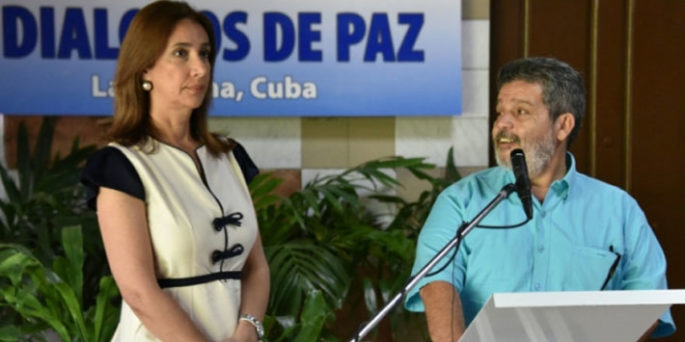
Peace is in sight in Colombia
The accord between the government of Juan Manuel Santos and the Revolutionary Armed Forces of Colombia (FARC) resolves the most sensitive issues that remained pending in the process of peace: a bilateral and definitive ceasefire and cessation of hostilities, the abandonment of weapons and the adoption of guarantees of safety and of a struggle against paramilitarism.
A negotiation that lasted almost six years (considering that it began with secret contacts in August 2010) came to its most important moment this week.
Within that period, Santos broke away from his former ally, former President Álvaro Uribe, now the visible leader of the movement against the peace process. The current president was re-elected and was able to build a social, political and entrepreneurial critical mass in favor of conciliation.
Shortly before the contacts, and even in their early stage, the guerrilla lost five of its front-rank leaders. Killed in action were Jorge Briceño (a.k.a. Mono Jojoy), Alfonso Cano, Raúl Reyes and Iván Ríos, all of them members of the top cupola, the Secretariat.
The FARC’s founder and top commander, Pedro Antonio Marín (a.k.a. Manuel Marulanda Vélez or Tirofijo) died in March 2008 of a heart attack.
The FARC was founded in 1964, but its nucleus had taken up arms in the late 1940s. No matter how you look at it, it is the world’s oldest guerrilla.
In decades of war, it made several attempts to negotiate peace, the most important ones being in 1984, during the administration of President Belisario Betancur. Three years of discussions (1999-2002) with the administration of Andrés Pastrana proved fruitless.
After the negotiations in the 1980s, came the Patriotic Union (UP), the party that took in the demobilized members of the FARC.
The paramilitarists then began hunting the unarmed former guerrillas and turned the alleged peace into a slaughter.
Thus died thousands of activists, dozens of councilmen, mayors and Congressmen, as well as the presidential candidates Jaime Pardo Leal and Bernardo Jaramillo. The UP disappeared, the former guerrillas returned to the mountains and the peace was frustrated.
This part of the story is the relevant background to the issue about guarantees for security and against paramilitarism.
Now there is a package of accords about the field, drug trafficking, the guerrilla’s insertion into politics, and the reparations due the victims. There is a special legal framework for transitional justice and the ceasefire will be signed.
A new generation of guerrilla leaders was able to conclude a negotiation with a government that came up with a realistic project.
At the stage, the diplomatic players were the guarantor nations, Cuba and Norway, and the observer nations, Chile and Venezuela. Needless to say, Mexico is out of the mix.
Because of the relevance of the military pact, there is a need to process it and solve the debate about the ratification of the accords as a whole. The government favors a plebiscite, while the guerrilla calls for a new constitutional assembly.
Be that as it may, this is the highest point reached by Colombia in its quest for peace, after decades of armed conflict.
Soon, the talks in Havana will end and the focus of attention will turn to Colombia. That country can look forward to a time of joy and a substantial and historic change in the regional landscape.
PHOTO AT TOP: Spokespersons Marcela Durán (Colombia) and Marco León Calarcá (FARC) announcing the ceasefire accord on June 22.
(Taken from the blog Del Gran Caribe, in the Mexican newspaper La Jornada)


